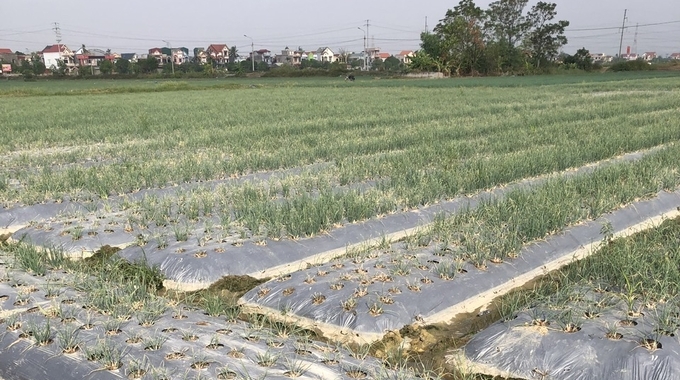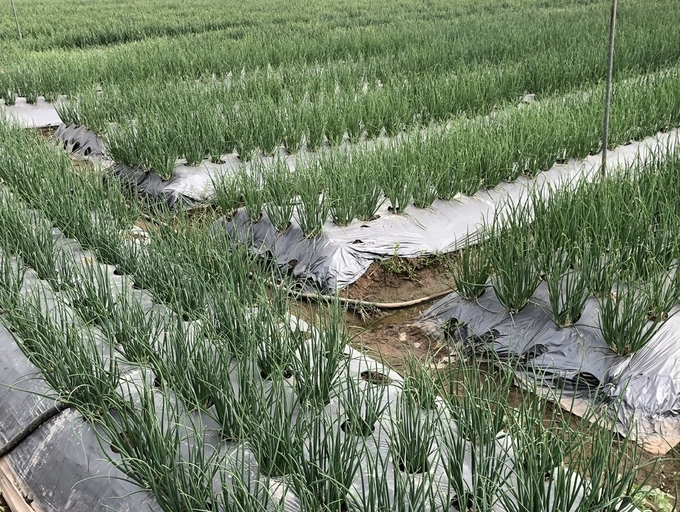This winter crop, 2 households in Tong Pho village, Quoc Tuan commune (new), Nam Sach district (Hai Duong) used agricultural film to grow onions on loam soil in the field, causing the onion plants to grow poorly, dry out, and even die. The cause may be due to the greenhouse effect on the surface of the onion beds.
This is a spontaneous method of some households in Nam Trung and Quoc Tuan communes (Nam Sach district) for the past 2 to 3 years with the view of using agricultural film instead of traditional straw covering. Specifically, from the winter crop of 2022, Nam Trung commune has about ten households; Tong Pho village, Thanh Quang commune (old) has 2 households. But because it is not effective, the number of people giving up gradually increases.
By the winter crop of 2024, only Mr. Nguyen Van Thieu and Mr. Mac Van Quy’s households in Tong Pho village still grow onions using agricultural film with a total area of about 2 hectares in Dong Say field in Tong Xa village, Thanh Quang commune (old).

Due to the large planting area, each household usually rents 2 to 3 acres of land, straw to cover the beds is rare, often having to buy from 500 to 800 thousand VND/sao, weed seeds and machine-harvested rice fall back and grow vigorously and compete for nutrients and light, affecting the growth and development of the onion plants; having to pump water regularly is very costly in terms of labor.
The direct cause:
Due to covering with agricultural film, the black side of the film is close to the bed surface, while the gray-white side of the film is facing up (the film is pre-punched and has a width of > 1m). This method invisibly makes the air layer above the onion bed much hotter due to the short-wave radiation of the sun penetrating the atmosphere and shining on the ground.
While onions are cold-loving plants, preferring cool climates, they need to be sprayed regularly to always ensure 80% humidity of the field to have enough water and regulate body temperature during growth and development.
Consequences:
Although the same source of seed tubers in Kinh Mon and the same traditional planting, watering and seasonal techniques… are the same, onions grown using bed covering film, in addition to the above symptoms, are also damaged in uneven patches on the same field. Visual inspection did not find any harmful objects.
People who grow onions in adjacent fields or in the same plot can only comment: Because the bed is covered with nylon, water accumulates and the onions cannot breathe through the roots, and die from the heat.

H
Covering the beds with nylon on the sandy soil in the dike, combined with using a 360-degree automatic spray nozzle regularly, the plants still grow and develop well. Photo: Huu Van.
Recommendation:
It is recommended that local professional agencies promptly collect the onion planting addresses of the two above-mentioned farming households as a field training site for farmers in general crop production and onion production in particular.
If the soil is loamy in the field, it is necessary to consider planting onions covered with straw as the most traditional and superior method.
In the sandy soil conditions in the dike, the sand thickness must be high (good drainage) and sprayed with a 360-degree automatic watering nozzle regularly to be able to apply planting with agricultural film.
